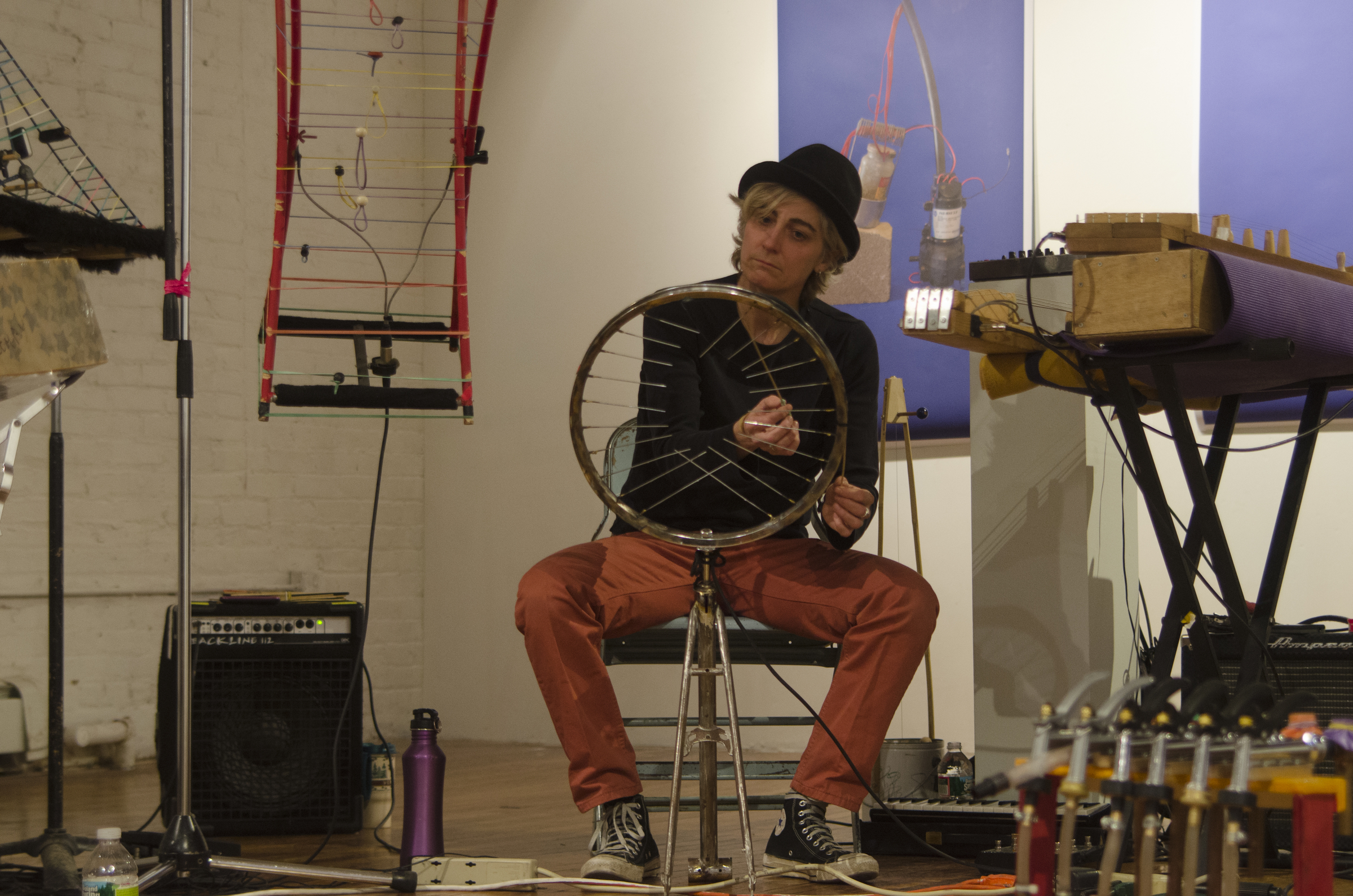[SlideDeck2 id=7988]

Exhibition forces viewers to consider how things are used
An artist plays an instrument crafted from a found object.
Artists Mary Mattingly and Michael Cataldi pose these questions in the latest show in a series of five exhibitions, “Process and Progress: Engaging in Community Change,” that focuses on the environmental and social impacts of development in the Bronx. The series began last October, and is scheduled to run through April 29 at the Bronx River Art Center’s temporary gallery at BronxArtSpace on 140th St.
Although the series focuses on West Farms, where the Bronx River Art Center’s new facility is being built, Mattingly and Cataldi’s works emphasize the changing circumstances in urban communities as a whole. Mattingly was inspired by objects she found in a several block radius around the BronxArtSpace gallery.
“When I saw the space where we were working, it struck me,” said Mattingly, a Brooklyn-based sculptor and visual artist who has spent years producing work that calls attention to environmental issues around the city.
For “Process and Progress,” Mattingly collected trash from West Farms and Mott Haven, remodeling discarded umbrellas, light bulbs, spaghetti sauce jars and copper wiring into imaginary tools, and presenting them in poster-sized photographs. These “useless” tools, as she calls them, cast light on a culture where commercial products are quickly outdated and thrown away. “What will our future look like with the abundance of things that we can’t really reprocess? What will cities look like?”
At the center of the oversized photographs is an assortment of trash and discarded objects the artist found to make the tools, held together in a web of twine shaped like a boulder.
A musical performance group, The Refuse Music Collective, performed at the exhibition opening on March 29, using elaborate instruments they designed out of abandoned items that had been destined for the trash heap.
Cataldi’s piece, “Disposition,” calls attention to changing urban spaces by focusing on a small sliver of land in West Farms that was transferred from state to private property for construction of a new housing development. Through a set of artfully damaged copies of a municipal archives photo of the land, his work explores the abstract concepts involved in transferring property.
“When this new project is being built, a lot of text, a lot of time, a lot of work is put into disposing this piece of land over to the developer,” said Cataldi, explaining that his piece examines who benefits most from that process. “It’s a very public land that no longer has potential” for community involvement.
Bronx River Art Center organizers hope the series will raise questions about the impact the development of urban spaces has on communities. Although the pieces address the issues that confront the surrounding neighborhoods, the artists acknowledge that communities themselves are best equipped to enact actual changes.
“The best you can hope for is that the viewer may go out and look at things differently,” said Cataldi.

